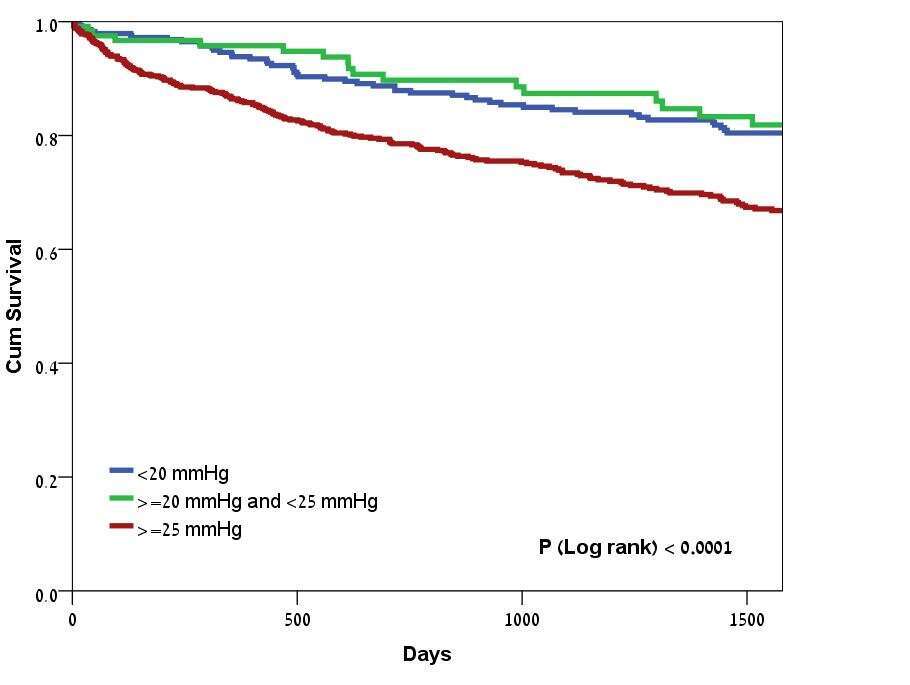Background: The World Symposium on Pulmonary Hypertension (WSPH) defined the upper limit of normal for resting mean pulmonary arterial pressure (PAPm) as 20 mmHg. Pulmonary hypertension (PH) was defined as an increase in PAPm ≥ 25 mmHg. There is ongoing debate whether the cutoff for PH should be lowered, or the term “borderline PH” be introduced for patients with a PAPm of 21-24 mmHg. There is no prognostic data to assess the clinical significance of this borderline range. We assessed the prognostic significance of borderline PH. Methods: We analyzed hemodynamic data of 1,100 consecutive patients who underwent right heart catheterization (RHC) at Sheba Medical Center during the years 2007-2014. Patients were divided to three groups: normal (PAPm <20mmHg; N=287), borderline (PAPm of 20-24 mmHg; N=121) and PH (PAPm ≥25 mmHg; N=692). Results: Mean age of the study population was 62±15 years and 59% were males. A total of 301 (27%) patients died during 4±2 years of follow-up. Kaplan Meier survival analysis showed that the cumulative survival at 4 years was similar among normal and borderline PAPm subjects, but was significantly lower among PH patients (Figure). Multivariate Cox regression analysis, adjusted for age, gender and left ventricular ejection fraction, showed that borderline PAPm patients had similar risk of death compared to normal patients (HR = 0.92, 95% CI 0.53-1.60, p=0.78), conversely PH patients were 42% more likely to die compared to normal patients (95% CI for hazard ratio 1.02-1.99, p=0.04). Conclusions: PAPm ≥ 25 mmHg during RHC is a predictor of poor survival. Patients with PAPm between 20 and 24 mmHg are not at increased risk compared to patients with normal PAPm.


